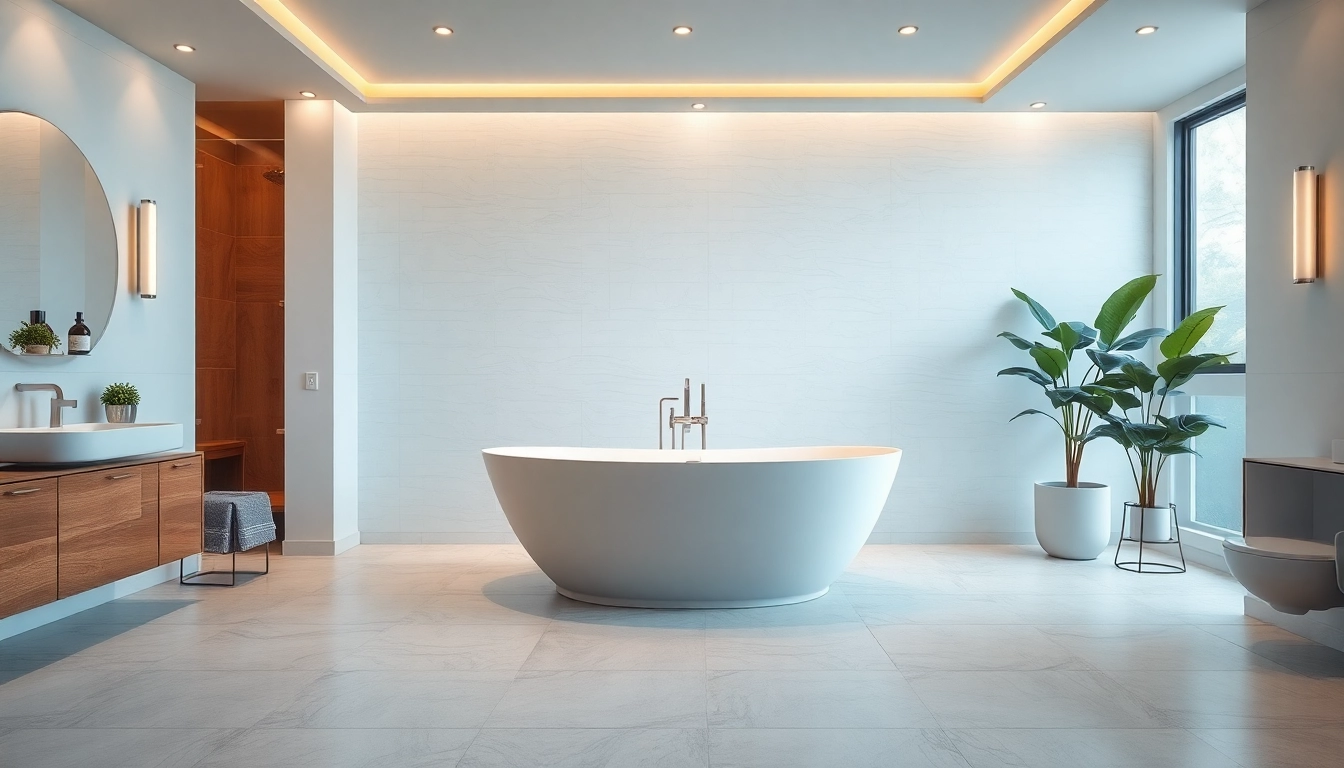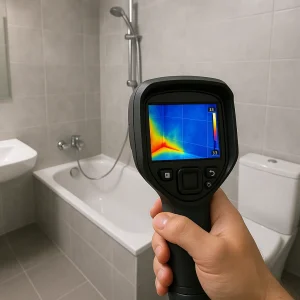The Ultimate Guide to Bathroom Remodeling: Transform Your Space in 2025

Understanding Bathroom Remodeling: Key Concepts
Definition of Bathroom Remodeling
Bathroom remodeling refers to the process of renovating or updating the appearance and functionality of a bathroom. This can include everything from minor cosmetic updates to a complete overhaul of the space. The goal is often to enhance the aesthetic appeal, improve functionality, and increase the value of the home. Typical processes might involve replacing fixtures, upgrading finishes, changing the layout, and installing new plumbing and electrical systems.
Importance of Bathroom Remodeling
Bathroom remodeling is significant for various reasons. Firstly, it can significantly enhance the comfort and usability of one of the most important spaces in your home. A well-designed bathroom can improve daily routines and provide a sense of relaxation and luxury. Secondly, bathroom renovations can increase a home’s resale value. Prospective homebuyers typically cite modern, updated bathrooms as a desirable feature. Additionally, remodeling allows for the incorporation of energy-efficient appliances and eco-friendly materials, leading to long-term savings and environmental benefits.
Common Bathroom Remodeling Mistakes
Despite the benefits, many homeowners make common mistakes during the remodeling process:
- Ignoring the Layout: Many people are unaware that functionality should come before aesthetics. A poorly planned layout can result in a cramped space.
- Overlooking Lighting: Insufficient lighting can make even the most expensive finishes look dull and uninviting.
- Choosing Aesthetic Over Quality: Selecting low-quality materials for immediate visual appeal can lead to higher maintenance costs down the road.
- Focusing Only on Style: While style is important, ensuring that the bathroom meets the family’s needs is paramount.
Planning Your Bathroom Remodeling Project
Setting a Budget for Bathroom Remodeling
The first step in any bathroom remodeling project is establishing a clear budget. This budget should account for materials, labor, and unexpected costs. Homeowners should aim to set aside at least 10-20% of their overall budget for contingencies.
Many factors can influence the budget, including the size of the bathroom, the quality of materials selected, and the complexity of the remodel. For an average remodel, costs can range from $6,000 to $15,000, while luxurious renovations can exceed $30,000.
Choosing the Right Design Style for Your Bathroom
Choosing a design style is crucial in setting the tone for your bathroom. Popular styles include traditional, modern, farmhouse, and minimalist. When selecting a style, consider the overall aesthetic of your home and the types of finishes and materials that complement it.
Engaging with an interior designer can help in aligning the bathroom style with your preferences and needs, ensuring a cohesive design throughout your home.
Creating a Functional Layout for Your Bathroom
A functional layout is essential for maximizing space. Whether your bathroom is large or small, careful planning allows for a practical use of space. Common layouts include:
- Full Bathroom: Typically includes a shower, bathtub, toilet, and sink.
- Three-Quarter Bathroom: Contains a shower, toilet, and sink.
- Half Bathroom: Features only a toilet and sink; ideal for guests.
When configuring the layout, consider how the space will be used, accessibility, and the flow of traffic. Factors such as the placement of plumbing fixtures and built-in storage will also play a role in creating a functional design.
Essential Elements of Bathroom Remodeling
Selecting Quality Materials for Your Bathroom
Choosing quality materials is vital in bathroom remodeling. Materials should be durable, water-resistant, and stylish. Focus on high-quality tiles for flooring and walls, as they need to withstand moisture and wear. Other materials worth investing in include:
- Vanities: Select solid wood vanities with a resistant finish to prevent warping.
- Countertops: Consider materials like quartz or granite which offer longevity and low maintenance.
- Fixtures: Invest in reputable brands for toilets, faucets, and showers to assure quality and efficiency.
Upgrading Plumbing and Electrical Systems
Updating plumbing and electrical systems is a critical part of any remodel. Outdated plumbing can lead to leaks and water damage, while old electrical systems may not support modern appliances or technologies like heated flooring or integrated lighting.
Consult with licensed professionals to assess the existing systems. Replacing old pipes, installing modern fixtures, and adding relevant electrical outlets are all smart moves to future-proof your bathroom.
Incorporating Eco-Friendly Features in Bathroom Renovations
Eco-friendly features not only contribute to sustainability but can also reduce utility bills long-term. Consider incorporating:
- Low-flow Fixtures: Toilets and faucets designed to conserve water can significantly lessen environmental impact.
- Energy-efficient Lighting: LED lights reduce energy consumption and have a longer lifespan than traditional bulbs.
- Recyclable Materials: Use tiles and fixtures made from recycled materials which can lower the carbon footprint of the renovation.
Trends in Bathroom Remodeling for 2025
Popular Colors and Finishes for Bathrooms
As we move into 2025, current color and finish trends are influenced by nature and minimalism. Earthy tones like beige, terracotta, and muted greens are favorites. Complement these with natural materials, such as wood or stone, to create a harmonious environment. Satin-finish metals are also becoming increasingly preferred for faucets and shower fixtures, to convey a modern yet soft touch.
Smart Technology in Bathroom Remodeling
As smart homes become the norm, incorporating technology into bathroom design is gaining momentum. Smart showers with adjustable temperatures, self-cleaning toilets, and mirrors that display weather updates are popular additions. This technology not only adds convenience but also enhances luxury.
Maximizing Space in Small Bathroom Remodels
For small bathrooms, space maximization is key. Strategies include:
- Using Vertical Space: Install shelves up high to draw the eye upward, making the space feel larger.
- Glass Shower Doors: These can create the illusion of more space compared to traditional shower curtains.
- Multi-Functional Fixtures: Choose vanities with built-in storage to help keep the area organized without sacrificing style.
Executing Your Bathroom Remodeling Project
Working with Professional Contractors
Hiring a reputable contractor can make a significant difference in the success of your remodeling project. Look for professionals with proven experience and positive reviews. Interview several candidates, ask for references, and verify licenses and insurance to ensure that your project is in capable hands. A good contractor will manage timelines, budget, and quality control throughout the renovation process.
DIY Tips for Minor Bathroom Remodeling Projects
For those who prefer a hands-on approach, there are several DIY projects that can enhance a bathroom without requiring a full remodel:
- Painting: A fresh coat of paint can dramatically update the appearance of the room.
- Changing Fixtures: Swapping out faucets and cabinet hardware is an easy way to modernize the space.
- Decorative Accents: Adding plants, towels, and artworks can personalize the space without heavy lifting.
Maintaining Your Newly Remodeled Bathroom
Once the remodeling is complete, regular maintenance ensures the beauty and functionality of your bathroom. Simple steps such as cleaning grout and resealing tiles, checking for leaks, and routinely inspecting the plumbing can prevent larger issues down the road. Additionally, keeping moisture at bay through proper ventilation is essential to prevent mold and mildew from forming.






